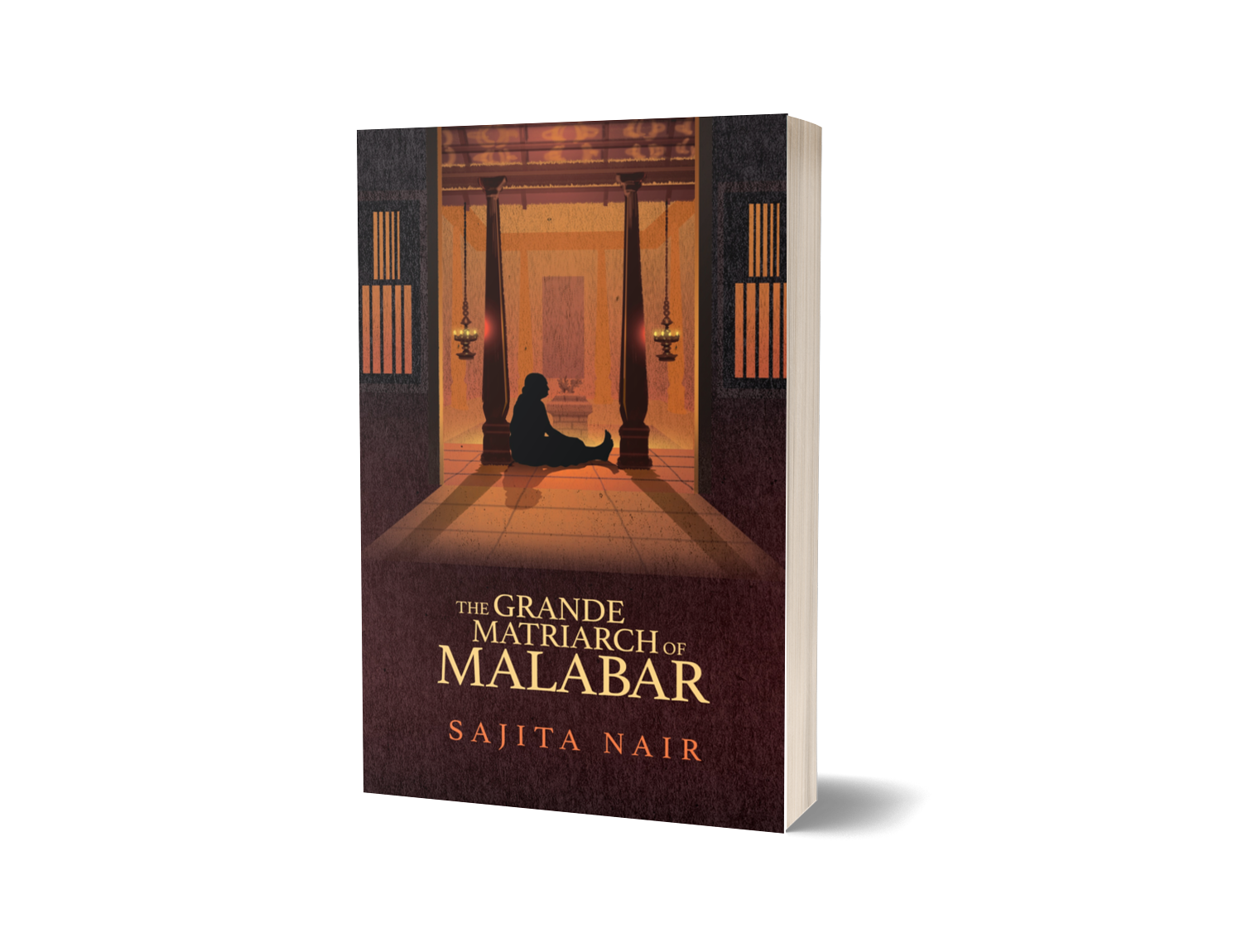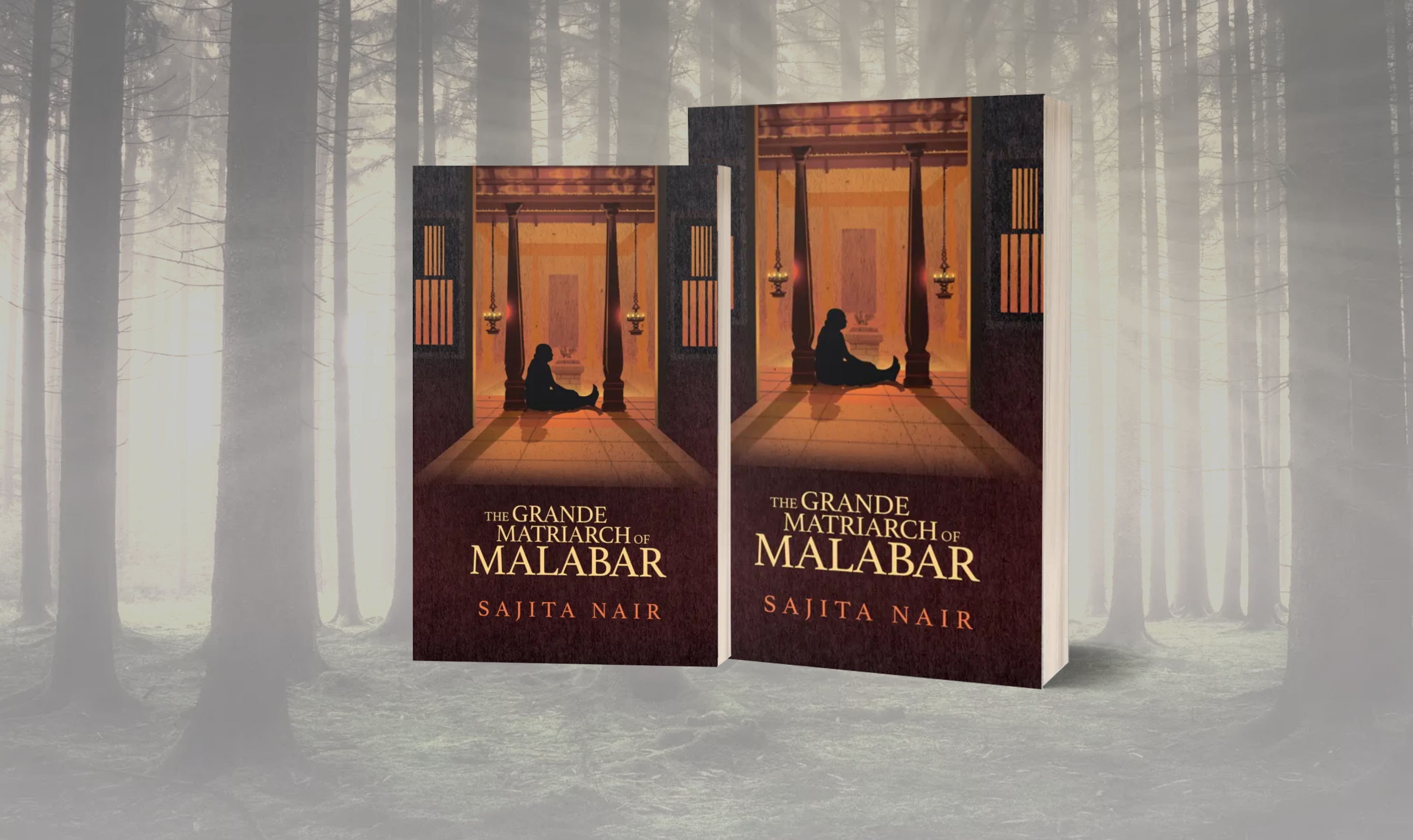Sajita Nair has published novels, short stories, essays and articles. A former army Captain, she was one of the pioneer women officers. Apart from reading and writing, she enjoys the outdoors and nature. She lives in Bengaluru.
Readomania caught up with her to know more about her latest book, The Grande Matriarch of Malabar
Readomania: What made you write this book based on the matrilineal tradition of Kerala? How did the idea come to you?
Sajita: As a woman from a matrilineal tharavad (ancestral home), I was intrigued by this tradition that was distinctly different from the patrilineal system followed elsewhere in the world. Moreover, there wasn’t much literature available about this unique system and its transition to the modern day society in Kerala. As each tharavad has interesting stories associated with it, I attempted to tell a story loosely inspired by mine.
Readomania: In today's world of feminism, does your book stand out as a counter-intuitive view?
Sajita: Far from it, I think that Dakshayani Amma as a character in my book is way too strong, opinionated and ambitious for her times. She is an able administrator and has a say in most things concerning the family members, the house and estates. In fact, as I wrote this book, Dakshayani Amma stood out for me with her personality traits, which gave her a strong footing in the society she lived in.
Readomania: Did you base the characters of your book on some real-life people you know?
Sajita: While creating my characters, I was inspired by stories I had heard about my ancestors. Based on my life experiences and an understanding of human behaviour, I combined various personality traits to create believable and memorable characters, which I thought would work best for the story.
Readomania: The fight between tradition and modernity was a raging one in the last few decades, but there appears to be a return to tradition in recent years. What do you think? How does the whole tradition of Kalyedath and Tharavad fare in this?
Sajita: Akin to artefacts of history preserved in museums, I believe that stories must be preserved in books and other media for consumption of a future generation. It adds to the richness and depth of a culture. Embracing our own traditions gives us a unique identity in the world. In my story, the Kalyedath tharavad, which was to be sold and destroyed, undergoes a transformation. Many tharavads in Kerala have been given a makeover and are thriving hubs of history, culture and tradition. Acknowledging and appreciating our roots is our way forward.

Readomania: The character of Dakshayani Amma is very complex. There is ambition, greed, love, and jealousy. Tell us how did you develop this character?
Sajita: As I developed Dakshayani Amma’s character, I wanted to tread a grey area between character traits that are considered outright good or bad. I tried to create a multidimensional character who is both good and bad, and sometimes neither. Adding layers to this character was difficult but my life experiences and understanding of human Psychology helped immensely.
Readomania: What do you think are the personality traits of a matriarch? How do they compare with a patriarch? And what do you think is the main difference in the two systems?
Sajita: A matriarch needs to be an able leader, administrator and intuitive enough to be aware of each family member’s needs. Although a patriarch needs similar traits, I think a matriarch is much more in tune with the emotions of the people around her. While in the patriarchal system, women hardly have a say, in a matriarchal system, members of both genders are treated, by and large, fairly.
Readomania: Did you have the story planned before you started writing, or did it come to you as you went along?
Sajita: I started with a vague idea of a story, but was forever confused about its narration. Should it be in the first person? Or epistolatory? Or an inanimate tharavad narrating its own story? I rewrote this book many times in many different versions and had readers give me feedback. With each rewriting however, the plot and characters became clearer to me and I settled finally for this version.
Readomania: Who is your favourite character from the book?
Sajita: Although I like all characters, Achuthan is my favourite from the book. His love and reverence for his mother and tharavad change the course of his life, and yet he’s steadfast. I also like the minor character of Sulaiman Hajiyar, whose affection and advice govern much of Achuthan’s life.
Readomania: Are there any challenges you faced while writing this book?
Sajita: Plenty! At first, it was about rewriting umpteen times to get the story and characters right. Then it was a slew of rejections from both agents and publishers. I was confused about what wasn’t working for the story until I learnt that it catered only to a niche audience. I’m forever grateful to Readomania, Dipankar Mukherjee and Indrani Ganguly, for believing in this story and giving me the opportunity to present it to readers.
Readomania: What would you like the readers to take back from the book?
Sajita: The takeaway for each reader would be different as each comes with their own experiences, expectations and understanding of the world. As an author however, all I can promise is that this story will certainly enrich them emotionally and culturally.
Readomania: Thank you Sajita, for this wonderful conversation.
Her latest book, The Grande Matriarch of Malabar, is now available on Amazon.


Comments